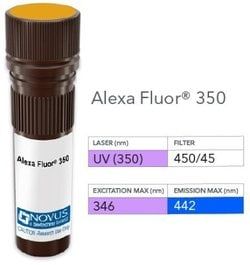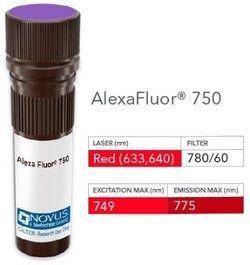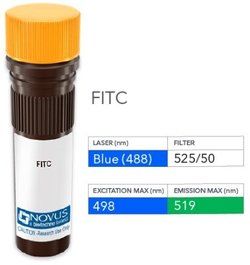beta-Catenin Antibody (9F2), DyLight 594, Novus Biologicals™
Manufacturer: Novus Biologicals
Select a Size
| Pack Size | SKU | Availability | Price |
|---|---|---|---|
| Each of 1 | NB008303-Each-of-1 | In Stock | ₹ 62,923.00 |
NB008303 - Each of 1
In Stock
Quantity
1
Base Price: ₹ 62,923.00
GST (18%): ₹ 11,326.14
Total Price: ₹ 74,249.14
Antigen
beta-Catenin
Classification
Monoclonal
Conjugate
DyLight 594
Formulation
50mM Sodium Borate with 0.05% Sodium Azide
Gene Symbols
CTNNB1
Immunogen
Recombinant chicken beta-Catenin (Uniprot: P35222)
Quantity
0.1 mL
Research Discipline
Cancer, Cell Biology, Cellular Markers, Extracellular Matrix, Immune System Diseases, Mucosal Immunology, Neuroscience, Phospho Specific, Signal Transduction, Stem Cell Signaling Pathway, Wnt Signaling Pathway
Test Specificity
This monoclonal antibody recognizes a protein of 92kDa, which is identified as beta-catenin. It shows no cross-reaction with gamma-catenin (also known as plakoglobin). The catenins, alpha, beta and gamma bind to the highly conserved, intracellular cytoplasmic tail of E-cadherin. Together, the catenin/cadherin complexes play an important role mediating cellular adhesion. Alpha-catenin was initially described as an E-cadherin-associated protein, and has been shown to associate with other members of the cadherin family, such as N-cadherin and P-cadherin. Beta-catenin associates with the cytoplasmic portion of E-cadherin, which is necessary for the function of E-cadherin as an adhesion molecule. Beta-catenin has also been found in complexes with the tumor suppressor protein APC.
Content And Storage
Store at 4°C in the dark.
Applications
Western Blot, Flow Cytometry, Immunocytochemistry, Immunofluorescence
Clone
9F2
Dilution
Western Blot, Flow Cytometry, Immunocytochemistry/Immunofluorescence
Gene Alias
beta 1 (88kD), beta-catenin, catenin (cadherin-associated protein), beta 1, 88kDa, catenin beta-1, CTNNB, DKFZp686D02253, FLJ25606, FLJ37923
Host Species
Mouse
Purification Method
Protein A or G purified
Regulatory Status
RUO
Primary or Secondary
Primary
Target Species
Human, Bovine, Canine, Chicken
Isotype
IgG1 κ
Related Products
Description
- beta-Catenin Monoclonal specifically detects beta-Catenin in Human, Bovine, Canine, Chicken samples
- It is validated for Western Blot, Flow Cytometry, Immunocytochemistry/Immunofluorescence.





